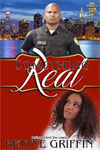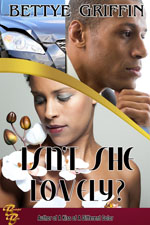 The days of simply uploading a book to the various online retail sites and having people download it are over. Now, with thousands of new titles being released each week, it’s all about discoverability. How to get your book noticed in a sea of literature?
The days of simply uploading a book to the various online retail sites and having people download it are over. Now, with thousands of new titles being released each week, it’s all about discoverability. How to get your book noticed in a sea of literature?
Prolific author Kristin Kathryn Rusch recently wrote a series of articles on her blog about this topic that you might want to check out. They are lengthy, but quite informative.
Advertising is one logical answer to this dilemma, and just about the best way to get the word out about your book is by advertising on BookBub. These people have somehow managed to amass huge numbers of subscribers (the more subscribers, the higher their fees) who receive emails 365 days a year listing bargain books in multiple categories (mystery and contemporary romance being the most popular, but also including thrillers, action, women’s fiction, literary, nonfiction and others).
Advertising on BookBub is not cheap, but there’s no denying its effectiveness. I first heard about this service in April 2013 through an article at author D.D. Scott’s (now inactive) blog. I immediately subscribed and did some monitoring of how advertised contemporary romance books fared. They way they shot up the rankings impressed me, but I had reservations about how my book would do in what I suspected was a majority Caucasian marketplace. Ultimately I decided to go for it (after expressing these doubts and being encouraged by others on the blog), and I submitted a request to feature my romantic comedy Accidentally Yours as a free offering (yes, you pay them handsomely to advertise, but http://thewritersguidetoepublishing.com/do-bookbub-ads-work-to-find-new-readersd they have to accept you, which struck me as downright nutty…but one reason their advertising is so successful is that they strive to offer high-quality books).
I was approved, but due to personal travel plans, did not set my date until early June, to give myself plenty of time to get both the book file and its pricing in order. I was thrilled when Accidentally Yours went to #1 in the entire Free Kindle Store. Better still, sales of my other books experienced a nice bump, obviously from readers who enjoyed reading this freebie (I made sure to upload a new version that included brief excerpts from a few of my other titles).
The same thing happened when I did my second BookBub promotion for A Love of Her Own in September, although the sales of paid titles didn’t get as high as the first time. That was about the time the market was starting to get glutted, but I did well enough to make a profit from my ad, and the title I included an intriguing excerpt from in the freebie shot back onto the Top 100 some eighteen months after its original publication.
Here are some recommendations I’d make in regard to using BookBub:
- Don’t even consider doing it unless you have at least three eBooks published, preferably more. You want to have more product to offer people than the one discounted or free title.
- I have yet to be turned down for an ad, and I understand that the main reasons for rejection are length (BookBub does not advertise novellas or short stories), quality (I’m not sure just how they make this determination to what’s behind those covers, but it’s listed as a requirement on their site), and a professional presentation (in other words, your cover shouldn’t look like you put it together yourself at your kitchen table unless you’re a design professional or are truly gifted in that area). While there is no minimum number of reviews required, a book with five reviews with three or four of them 3 stars or below will not likely be accepted, whether those reviews are truly deserved or not, i.e., someone giving you a low ranking because of downloading.
- Use an older title, particularly if you’re doing a freebie. I personally don’t like slashing the price on an eBook less than two years old; I don’t think it’s fair to readers who paid full price.
- The first book of a series works well to spur sales of the remaining titles in the series…just make sure that readers know it’s a series.
- Pay close attention to your front and back matter. Two suggestions I like are to include the book’s description in the front, right after the copyright page, to remind the reader of the plot (suggested by J.A. Konrath) and to include a listing of your other books in the front (suggested by Deatri King-Bey right here at Become a Successful author) with purchase links, of course (I used to provide Amazon links in the Kindle file and Barnes & Noble links with the Nook file, but now I simply link to my eStore, which has both, as well as links to purchase directly from my eStore at a cheaper price. I also like to include a brief note to the reader with a link to whatever excerpts I’ve included (which are also in the table of contents). Every piece of front matter should be absolutely necessary; you don’t want the reader to have to thumb through (or the electronic equivalent of) pages and pages before getting to the actual start of the book. All the other stuff can go in the back matter.
- As I mentioned above, BookBub’s rates are pretty hefty. It bases its prices (which are increased regularly as their subscriber lists continue to grow) on both the number of subscribers in the desired category and your sale price. A free book is cheaper than a 99-cent book, which in turn is cheaper than a $1.99 book.
- I personally feel it’s better to pay more for a 99-cent listing than to do a freebie, and to maximize earnings, consider enrolling in Kindle Select (a must if you plan on offering a free book) and subsequently in the Countdown program running simultaneously with your promotion, which will still net you the 70% royalty rate even for a 99-cent book.
- With regard to pricing, BookBub recently introduced an African-American category. This is virtually the same as being segregated from the general book population in bookstores in the African-American section, but the rates are very affordable because of the smaller number of subscribers (50K vs. nearly 700K for contemporary romance and over 500K for women’s fiction), which makes it worth considering. If you like the results, you can always run another ad (but not within six months if it’s for the same book) and put it in a more broader category (BookBub retains the right to make a final determination about your chosen category).
- Put your best work forward. You might want to do a complete read-through of your work and upload a new file if necessary. Some avid readers will snap up everything under $1, whether it’s their preferred category or not, read them, and can be very critical. When I advertised A Love of Her Own , some readers complained about a continuity error that hadn’t been caught in the original Kensington print copy (because editors aren’t perfect). I went in and corrected it and uploaded a new version, and reviews after that have mostly been positive. If you seek universal adoration or are in the habit of replying to negative reviews (something I strongly advise against doing, no matter what the circumstances), BookBub probably isn’t for you. It’s reading reviews or emails from people who say they are buying my other books after having read the sale or free book that make it worthwhile, at least for me.
Happy Sales to You!
If you found this post helpful, please use the Share buttons to spread the word about it.
Don’t have a copy of Become A Successful Author? What are you waiting for?Become A Successful Author is used in the “How To Write That Novel” course at Chicago State because it covers everything from branding to writing to editing to formatting and uploading electronic and print books to marketing and so much more. Your time is money. Look at all the time, thus money, you’ll save by ending your search for answers: Purchase Become A Successful Author for only $4.99 (eBook) or $8.99 (print) from: Amazon (US), Amazon (UK), Barnes & Noble

